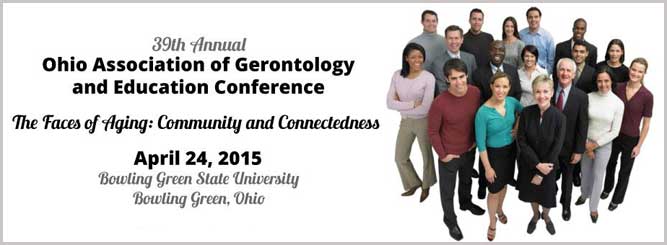Paper Session III – Aging in Place
Inclusion of Seniors in the Design of Assistive Technology
Location
BTSU 308
Start Date
24-4-2015 11:30 AM
End Date
24-4-2015 12:30 PM
Description
Assistive technology helps many older adults complete essential tasks, thus providing them a means to remain functionally independent within their communities. However, many older adults either reject the use of devices or misunderstand their intention. The gap between design and need may be bridged through the active participation of elders in the design process. Previous studies have focused on older persons’ attitudes toward adopting new technology, emphasizing how to promote and maintain usage. Recent research reveals the necessity of including older adults in the design, research, and application of assistive technology in an effort to meet the real needs of this diverse population instead of the needs perceived by the designer. Assistive technology developers’ conceptualizations sometimes do not mesh with the needs of consumers, and this disconnect can negatively impact seniors’ ability to age-in-place. Developers may focus on a narrowly defined idea of health while older adults often have broader characterizations of what it means to be healthy. Inviting older adults to participate in the design of assistive technology will encourage older persons’ use of this technology and thereby improve their social interactions and support their aging-in-place.
Inclusion of Seniors in the Design of Assistive Technology
BTSU 308
Assistive technology helps many older adults complete essential tasks, thus providing them a means to remain functionally independent within their communities. However, many older adults either reject the use of devices or misunderstand their intention. The gap between design and need may be bridged through the active participation of elders in the design process. Previous studies have focused on older persons’ attitudes toward adopting new technology, emphasizing how to promote and maintain usage. Recent research reveals the necessity of including older adults in the design, research, and application of assistive technology in an effort to meet the real needs of this diverse population instead of the needs perceived by the designer. Assistive technology developers’ conceptualizations sometimes do not mesh with the needs of consumers, and this disconnect can negatively impact seniors’ ability to age-in-place. Developers may focus on a narrowly defined idea of health while older adults often have broader characterizations of what it means to be healthy. Inviting older adults to participate in the design of assistive technology will encourage older persons’ use of this technology and thereby improve their social interactions and support their aging-in-place.



